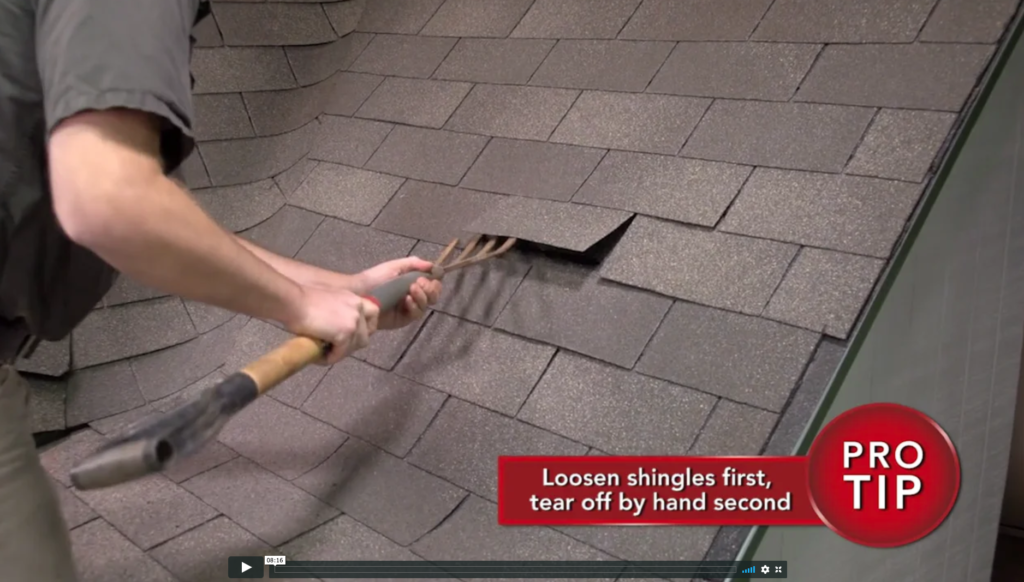DIY Roofing, Repair
5 Signs Your Shingles Need Replacing
Wondering if your old shingles need replacing? Generally, new shingle roofs should last approximately 15 to 20 years. However, many factors, such as proper installation, sun, rain, wind and ventilation, can impact the life of your roof.
Inspect your roof regularly to keep raindrops from falling on your head. One of the benefits of regular inspections is prevention of costly water damage repair – a big plus if you decide to sell your home. Having a roof over your head is not just for practicality or aesthetics, though both of those play a part, but it is for safety from the sun, snow, lightning and rain. Here are warning signs to watch out for…
1. Broken or Missing Shingles
Shingles in the yard is a definite sign that your roof is in need of repair. If the shingles are in your yard, then they do little good protecting your roof! When you start to see crumbling or broken shingles, it is time to call Kenner & Sons, Inc. Missing shingles create openings that allow water to seep into the woodwork and cause structural damage. Broken or missing shingles may have been caused by excessive wind, physical damage or gradual wear and tear. Shingles blown off or dislodged indicate that the sealant is no longer bonding them together. It is time to replace it.
2. Curled, Cupped or Clawed Shingles
Check your shingle roof for curling or clawing, which you can find examples of in this photo. These are signs of aging and damage from excessive heat. Heat causes the asphalt in shingles to dry up and shrink. With curling shingles, your roof becomes susceptible to wind uplift and ice damage. The shingles are also more brittle and can easily break and lose tab edges.
Generally, curling is caused by ventilation issues. High temperatures, when the heat cannot escape through conventional ventilation, affect the shingles above. As a matter of course, ventilation problems should be addressed before replacing your worn out, cupped shingles. If the curling is widespread on your roof, it will need replacement. You can call Kenner & Son, Inc. for a free estimate to evaluate the situation and provide recommendations for repairs.
3. Buckling Shingles
As shingles age and weather, the oils that keep them flexible eventually dry out. Buckling shingles show visible waved distortions that usually run vertically up a roof slope. These shingles are highly susceptible to wind and ice damage and can be torn off easily. Overall roof age and wet or poorly installed underlayment are common causes of buckling shingles.
4.Granule Loss and Bare Spots
Shingle granules look like large grains of sand. Shingle granules in the gutter are signs of advanced wear. The aging of a roof system or physical damage can cause bare spots and a loss of granules. When the protective granules of a shingle are lost, the shingles begin to harden from heat and sun exposure. Granule loss of the roof system will accelerate aging and shingle decay and can become an entry point for water. After a good rain, check the exhaust locations of your downspout for significant amounts of granules. If you see any, repair or replace your roof as soon as possible, before a roof leak has a chance to take you by surprise.
5. Worn Out Flashing
The layer of metal sheeting, usually installed at angles or roof joints, is called flashing. Flashing is used to prevent water from leaking into the roof, but damage from storms or general wear-and-tear can cause flashing to lift and separate. Flashings located around sewer vent pipes and chimneys, are all subject to separation, lifting, and dried-out caulking. Flashing can be damaged by natural forces like wind, snow, ice, hail or fallen tree branches.
You roof may show one or even all of the five warning signs above. Even if that’s the case, you may not need total roof replacement. Kenner & Sons, Inc. can give your roof a thorough examination, and let you know whether you are in need of a new roof, or just a few repairs.
Let us handle your roofing needs. Call today for a free evaluation and cost estimate.

